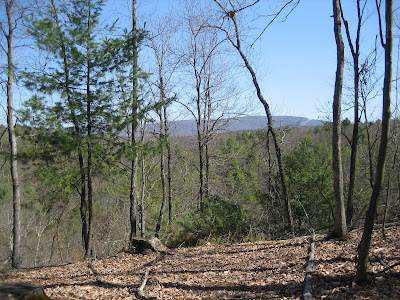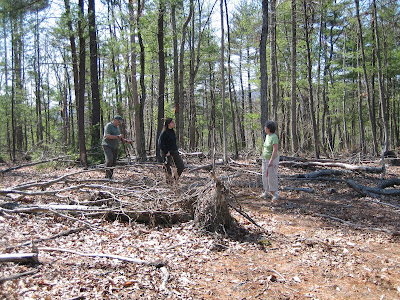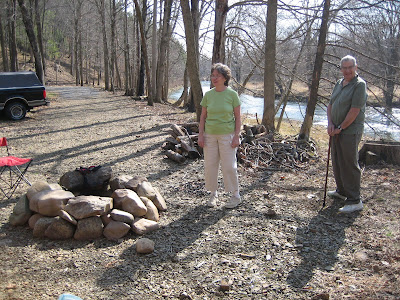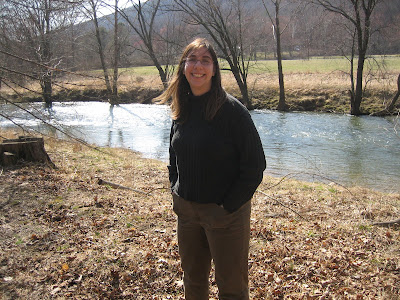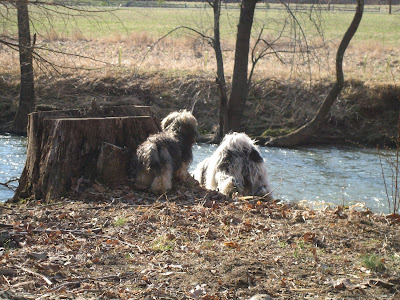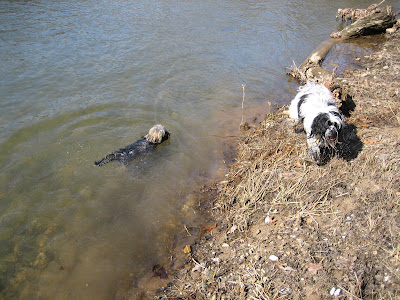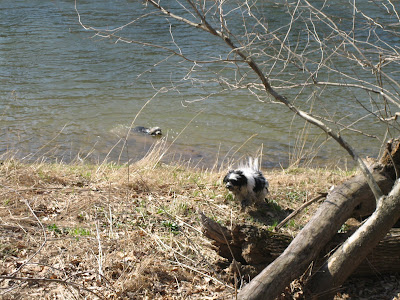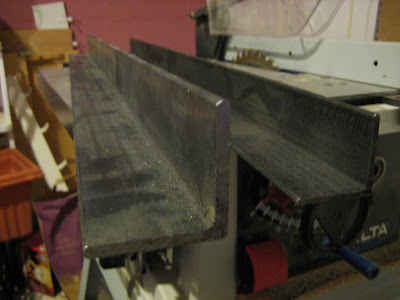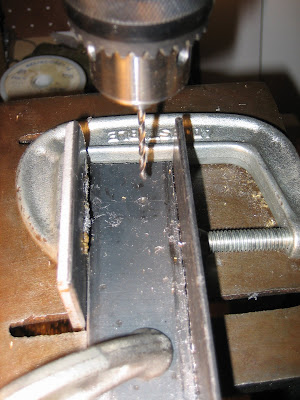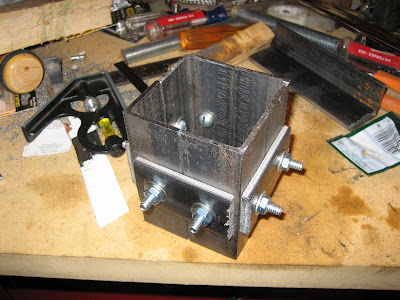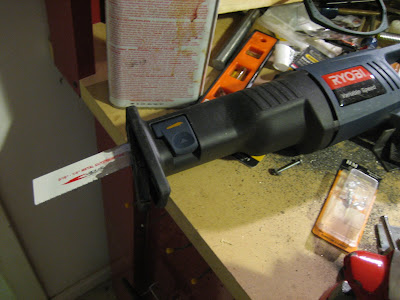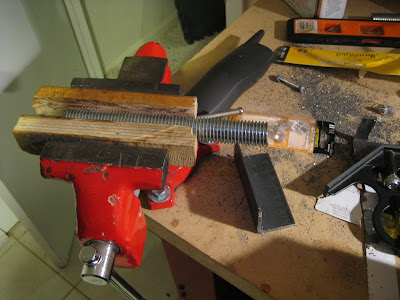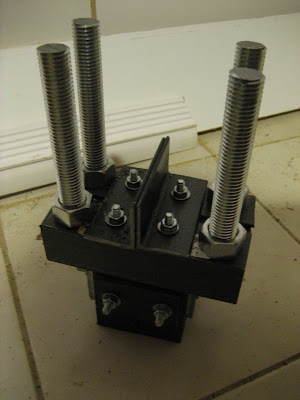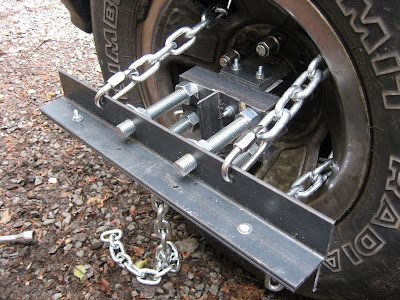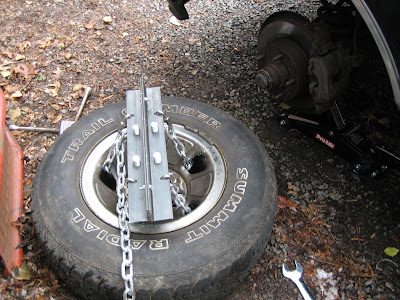We headed up as a two vehicle caravan: our vintage Toyota camper that we would leave for the summer and our new four wheel drive loaded with equipment. The old camper made it through the mountains just fine; the only real obstacle was the big hump to get from the private road onto our lot.
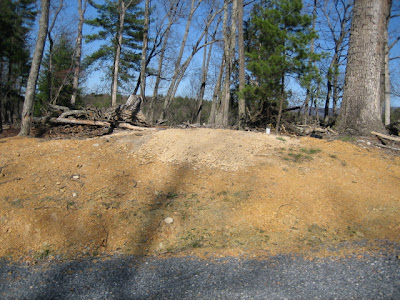
Here is a view of the hump looking from the road into the lot. There was a gravel pile on top that we smoothed out by hand, and some logs that we moved, but it was still pretty daunting. I do plan to rent some sort of land moving equipment to grade this entrance, but we were impatient to get started. I drove the camper up and over first. This maneuver involved gathering some courage, gunning the engine, and not stopping until it crested. This all happened too fast to get a picture. Which is a shame, since this was the first time I ever Lizz say, "I wish I owned a video camera."
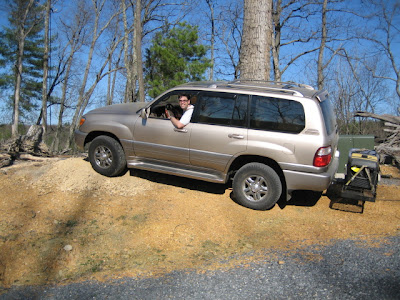
The four wheel drive negotiated the entrance without breaking a sweat. It made me confident enough to stop and pose for a picture. Here are some more snapshots Lizz took as I crested the hump and navigated the logging trail that runs along the ridge. I posted them to preempt the inevitable comments about our buying an obnoxious 5500lb SUV. At least I do fill it with stuff and drive it off road.
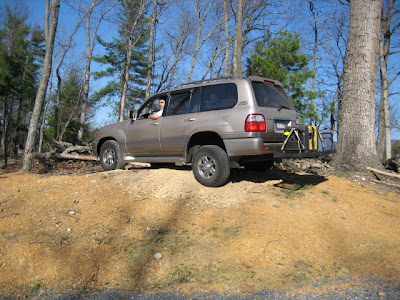
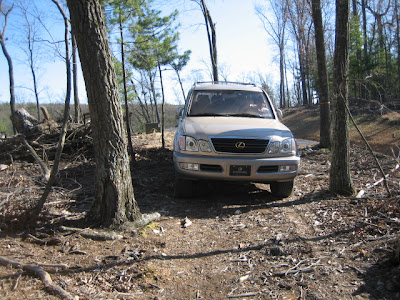
The logging trail already on the land makes for a decent camp road. We only had to move some logs and branches out of the way to make it back to the end of the ridge where we wanted to camp, about 400 feet from the road.
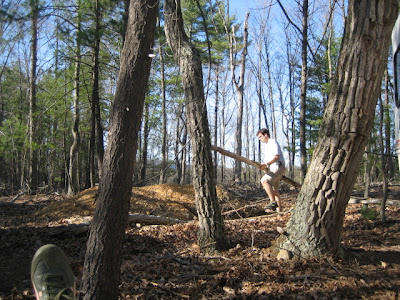
Lizz thought this picture would look impressive. These logs were cut a few years ago and are quite dry, so they only weigh 10% of what they look like. That is Lizz's foot in the shot. She lounges as I labor.
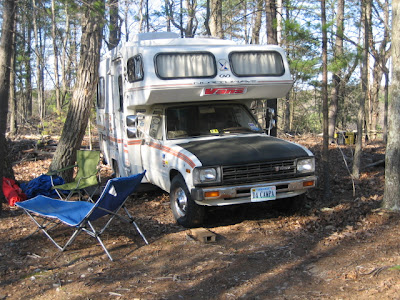
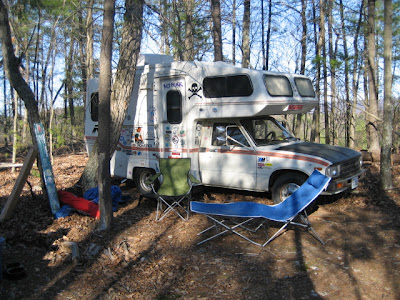
Here is our new weekend home. We will leave the camper here until fall.
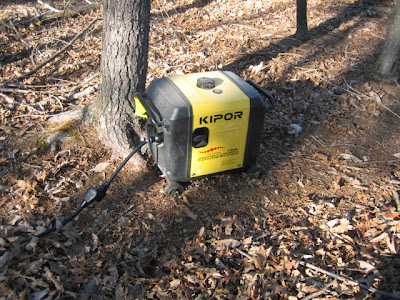
This generator is quite the nice piece of kit. It has a quiet four cycle engine, an insulated case, and an automatic throttle, which makes for a very quiet system. It proved very useful on its first weekend. We woke up Sunday morning to sub 40 degree temperatures, and it allowed us to run our electric heater and warm up the little camper. By noon, the temperature shot up to over 80 degrees. It is too early for any leaves on the trees, which made for a hot afternoon. The little generator easily ran our camper's air conditioner and cooled us down after a long hike in the woods.
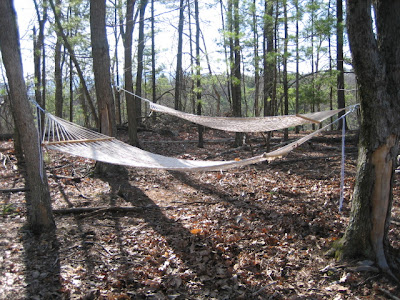
My last accomplishment of the first day was hanging our hammocks. A matched set means no fighting over this prime lounging spot.
